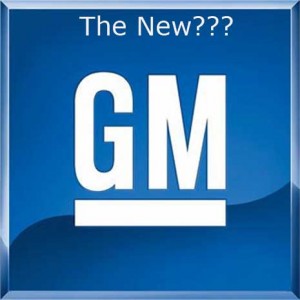
With little option left for opponents, the new GM could be back in business as early as Thursday afternoon.
General Motors is getting closer to its official rebirth. Barring an unforeseen setback, the maker should complete its so-called “363 Sale,” by the end of this week, and emerge a leaner and more efficient maker with significantly less than the crushing debt that drove it into bankruptcy.
A federal bankruptcy judge rejected demands by opponents to the GM reorganization plan for a quick Appeals Court hearing. That leaves little likelihood that even if they eventually get to be heard, critics of the automaker’s plan would be able to stop – or reverse – its reorganization, which will result in a “new” General Motors owned by the U.S. Treasury, a union health care plan, the Canadian and Ontario governments, and a consortium of lenders who traded debt for equity.
On Sunday evening, Judge Robert Gerber issued a ruling in favor of the sale of GM’s “good” assets, a plan that would leave other assets, including dozens of unneeded plants, to be sold off and used to pay a portion of the old company’s debts. The magistrate, however, put in place a four-day stay, allowing opponents time to raise objections.
Similar concerns briefly halted the re-emergence of Chrysler, but the deal was allowed to move ahead when the U.S. Supreme Court declined to hear an appeal.
Judge Gerber’s stay will pass at noon, Thursday, and the 363 sale could be completed shortly thereafter. The White House had originally given a deadline of July 10th for completing GM’s passage through the bankruptcy process. After that, the government warned, it would pull the financial support the automaker needed to stay in business. In all, GM is expected to have received more than $50 billion in federal aid.
Meanwhile, GM is requesting the court effectively allow it to fire 38 dealers who have rejected revised franchise agreements. As part of its bankruptcy plan, the automaker is sharply paring down its retail network, and will terminate more than 1,000 of its dealers. Hundreds more will be shed when GM sells off its Hummer, Saturn and Saab brands. In all, it’s expected to trim its retail outlet from around 6,000 to as few as 3,600.
Unlike Chrysler, which used the power of the bankruptcy process to immediately terminate nearly 800 dealers, GM had hoped to work with its retailers, allowing those who will be dropped to wind down their operations through late 2010. But the 38 who the court is being asked to terminate have declined to accept the proposed plan.
GM has explained its plans by noting that the large number of dealers representing its various brands make it uncompetitive and increase its costs. Court documents claim the company is spending $2 billion annually on dealer subsidies – often to prop up low-volume showrooms.
“A leaner, more profitable dealer network with higher annual vehicle sales per dealership is essential to reducing GM’s staggering dealer support costs and a critical component of helping to ensure the viability of (the) New GM,” wrote Joseph Smolinsky, on behalf of the automaker, in a court filing.
So far, 99% of the dealers who’ve been offered new franchise agreements to stay on with GM have accepted, the company said, as have 98% of those who will be terminated. As part of the agreement, the dealers being eliminated will get financial assistance to help them sell off their remaining inventory.

There is a huge hoax being perpetrated on the USA.
The idea of the Govt. taking over private enterprise is wrong. They can’t keep themselves
straight, how can they keep an Auto Co. straight?
We are in trouble, Big trouble. A select ## of politicans will be responsible for skimming millions off the top before anyone catches on.
That, my friends is for the record. Wait and watch. Savvy Senior Citizen.
We will have them again in the same problem and the govt will keep giving and the taxpayer will be the one hurt with more job reductions and no rights They will say again we are in need of help